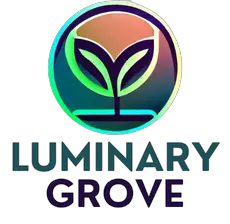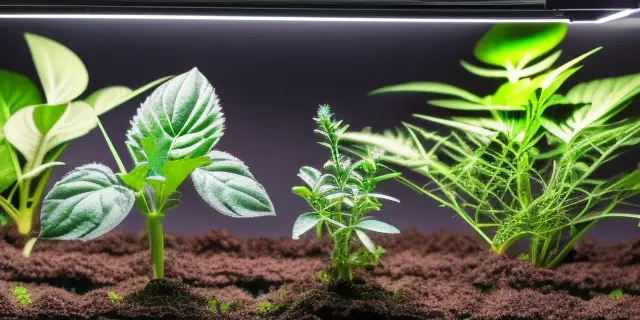Light is one of the most important factors that affect plant growth and development. Plants use light to perform photosynthesis, which is the process of converting light energy into chemical energy that fuels plant growth. Different plants have different light requirements, depending on their natural habitats and adaptations. Some plants prefer low light, while others need high light intensity. Some plants thrive under cool light, while others prefer warm light. Some plants need a specific photoperiod, which is the length of day and night, to trigger flowering or dormancy.
To grow plants indoors, it is essential to provide them with artificial light that mimics the natural sunlight they would receive outdoors. However, not all artificial lights are created equal. Some lights may not provide enough light intensity, while others may emit too much heat. Some lights may not have the right color spectrum, while others may have a fixed spectrum that cannot be adjusted.
This is where full spectrum LED grow light come in handy. Full spectrum LED based grow lights are one of the most advanced types of grow lights available. They produce a wide range of wavelengths that cover the entire visible spectrum, from violet to red, as well as some ultraviolet and infrared rays. Full spectrum LED grow lamps can provide plants with the optimal light quality and quantity for each stage of their growth cycle.
What are the benefits of full spectrum LED grow lights?
Full spectrum LED-grow-lights have many advantages over other types of grow lights, such as fluorescent, high-pressure sodium (HPS), or metal halide (MH) lamps. Some of the benefits include:
- Higher efficiency: Full spectrum LED hydroponic lights use less energy and produce more light output than other types of grow lights. They also have a longer lifespan and require less maintenance.
- Lower heat: Full spectrum LED horticulture lights generate less heat than other types of grow lights, which reduces the risk of overheating or burning the plants. They also do not need additional cooling systems or fans, which saves space and money.
- Better quality: Full spectrum LED lights for plants produce a more natural and balanced light spectrum that enhances plant growth and health. They also improve plant color, flavor, aroma, and potency.
- More control: Full spectrum LED growing light can be customized to provide the optimal spectrum for each stage of plant growth, from seedling to flowering to harvest. They can also be dimmed or switched on and off according to the desired photoperiod.
How to customize full spectrum LED grow lights for plant growth?
Full spectrum LED-grow lights can be customized by adjusting the intensity, duration, and color of the light they emit. These factors can affect various aspects of plant growth, such as germination, vegetative growth, flowering, fruiting, and dormancy.
Intensity
The intensity of light refers to how bright or dim the light is. It is measured in lumens (lm), which is the amount of visible light emitted by a source. The intensity of light affects the rate of photosynthesis and the amount of biomass produced by plants.
Generally speaking, plants need more light intensity during their vegetative stage than during their flowering stage. This is because they need more energy to produce leaves, stems, and roots than to produce flowers and fruits. However, too much light intensity can cause stress or damage to plants, especially if they are not adapted to high light conditions.
To customize the intensity of full spectrum LED horticulture light, you can use a dimmer switch or a timer to adjust the brightness or duration of the light. You can also use a lux meter or a PAR meter to measure the actual light intensity at the plant canopy level.
Duration
The duration of light refers to how long or short the light is on or off. It is measured in hours or minutes per day. The duration of light affects the photoperiodism and circadian rhythm of plants.
Photoperiodism is the response of plants to changes in day length. Some plants are short-day plants, which means they flower when the day length is shorter than a critical threshold. Some plants are long-day plants, which means they flower when the day length is longer than a critical threshold. Some plants are day-neutral plants, which means they flower regardless of day length.
Circadian rhythm is the internal clock of plants that regulates their physiological and behavioral processes over a 24-hour cycle. It affects various aspects of plant growth, such as metabolism, hormone production, gene expression, and stress response.
To customize the duration of full spectrum LED grow lamps, you can use a timer or a controller to set the on and off cycles according to the desired photoperiod. You can also use a calendar or a chart to track the seasonal changes in day length and adjust accordingly.
Color
The color of light refers to the wavelength or frequency of the light. It is measured in nanometers (nm), which is the distance between two peaks of a wave. The color of light affects the spectrum or quality of light that plants receive.
The spectrum of light is divided into different regions, such as ultraviolet (UV), visible, and infrared (IR). The visible region is further divided into different colors, such as violet, blue, green, yellow, orange, and red. Each color has a different effect on plant growth and development.
Generally speaking, plants need more blue light during their vegetative stage than during their flowering stage. This is because blue light stimulates chlorophyll production, leaf expansion, stem elongation, and root growth. However, too much blue light can inhibit flowering and fruiting.
Plants need more red light during their flowering stage than during their vegetative stage. This is because red light stimulates flowering, fruiting, and seed production. However, too much red light can cause excessive stretching and spindly growth.
Plants also need some green, yellow, and orange light for optimal growth and health. These colors help balance the effects of blue and red light, as well as enhance photosynthesis, pigmentation, and disease resistance.
Plants may also benefit from some UV and IR light for enhanced growth and quality. UV light can increase the production of flavonoids, anthocyanins, and terpenes, which are responsible for the color, flavor, aroma, and potency of plants. IR light can increase the leaf temperature and stimulate flowering and fruiting.
To customize the color of full spectrum LED grow light, you can use a spectrum controller or a remote control to adjust the ratio or proportion of different colors according to the stage of plant growth. You can also use a spectrometer or a colorimeter to measure the actual spectrum or color temperature of the light.
Conclusion
Full spectrum LED grow lights are a great choice for growing plants indoors. They offer high efficiency, low heat, better quality, and more control than other types of grow lights. They can also be customized to provide the optimal spectrum for each stage of plant growth by adjusting the intensity, duration, and color of the light. By doing so, you can optimize your indoor gardening experience and enjoy healthy and productive plants all year round.



Leave a Reply